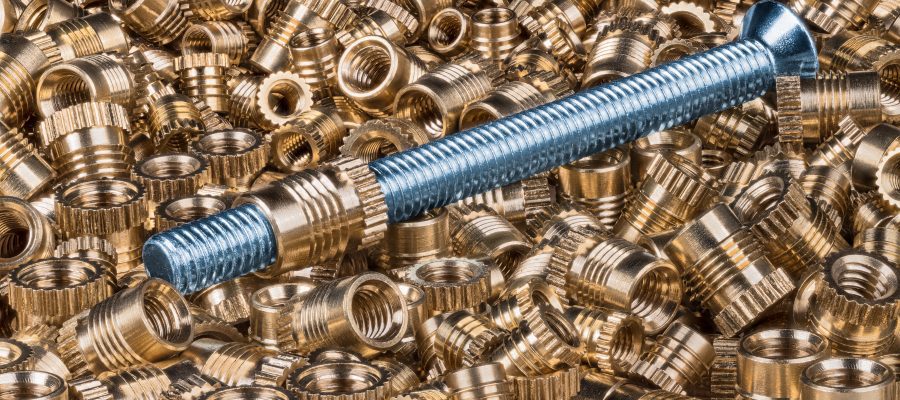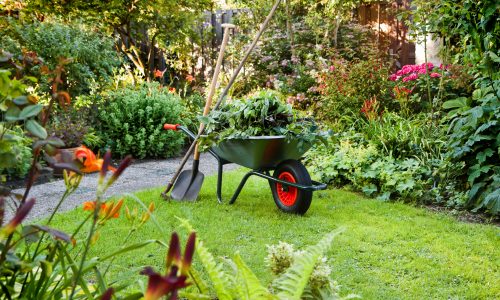The Best Threaded Inserts

Our Review Process
Don't Waste Your Money is focused on helping you make the best purchasing decision. Our team of experts spends hundreds of hours analyzing, testing, and researching products so you don't have to. Learn more.
Our Picks For The Top Threaded Inserts
- 1. Anwenk Hex Socket Threaded Inserts, 40-Count
- 2. E-Z LOK Brass Threaded Inserts, 25-Count
- 3. Hilitchi Assorted Sizes Female Threaded Inserts, 460-Count
- 4. Swpeet Carbon Steel Assorted Sizes Threaded Inserts, 122-Count
- 5. Sprite Science Alloy Steel Threaded Inserts, 40-Count
- 6. Glarks Zinc Plated Threaded Inserts, 50-Count
You'll get 40 threaded inserts into this set, each sized 1/4-inch-20 with an external diameter of 10 1/2 mm and a total length of 15 mm. These inserts are made for wood furniture and ready to slide into your drilled hole. The material is high-quality carbon steel for extra wear resistance.
Built to LastHigh-quality carbon steel with high hardness gives these inserts extra durability for years of use.
Choose between brass and stainless steel with this insert, which comes in a variety of lengths. You can also order a kit to keep your new set of thread inserts well organized if you don't already have storage. These thread inserts are best for hardwood applications like furniture and cabinets.
Budge-Free OptionThese threaded inserts won’t budge once you place them, thanks to an external knife thread that cuts into the wood and secures it in place.
Durable brass construction gives these knurled threaded inserts plenty of strength so you won't have to worry about deformation. The smooth surface makes them easy to install, and you can choose from an assortment or a specific size. The design makes them easy to install so that even beginners can choose this set.
Stock Your WorkbenchYou’ll have everything you need to build a threaded insert collection with this set of 460 inserts, which all come in a handy case.
Designed for wood furniture, these threaded inserts have a smooth and flat socket head and a flanged thread texture. Whether you're working with pine, plywood, fiberboard or some other type of wood, these threaded inserts can help. You'll get quality carbon steel with a yellow zinc-plated surface to prevent corrosion and oxidation.
High-Humidity OptionFor moisture-prone areas, this threaded insert is plated with yellow zinc to resist corrosion and oxidation.
Buying Guide
If you have ever worked with tools, you know the value of screws and fasteners. But you can’t use a screw without something to slide it into. The good news is that you can turn an empty hole into a fastener simply by adding a threaded insert.
A threaded insert can be used either to create a new thread for fastening or to replace a stripped thread. You simply need to find the correct fastener that fits the hole you’re trying to fill and adhere it to the surface. With softer materials like plastic, you can sometimes simply press the thread into the material itself to create an insert.
There are different types of threaded inserts, though, so it’s important to know the difference. All threaded inserts are designed with a female coupling so that they can work with male fasteners. Helical threaded inserts have a coiled design made of either steel or bronze. The metal will be sized to work with a specific type of fastener.
Another type, captive nut inserts, which are also called cage nuts, feature a nut wrapped around female threading. These types of nuts are commonly used in mounting items on the wall.
Before you buy threaded inserts, consider the type of material you’ll be inserting them into. If you’re working with wood, for instance, there are threaded inserts made specifically for that purpose. Check to make sure your chosen insert works with your type of wood. Harder woods will require a more intensive preparation process than softer woods.
You’ll also need the right tools if you are installing a new threaded insert rather than replacing an existing insert that has stripped threads. You can use a drill press, but there are threaded insert drivers that are designed specifically for installing threaded inserts. The cost of these drivers is minimal, so it might be well worth the investment even if you’re only installing one.
What to Look For
- Threaded inserts typically come in multiples. If you only need one, you might find that you’re buying a dozen or more simply because that’s how they’re sold. If you think you’ll only need a single one, you may try your local hardware store.
- Some threaded inserts are sold with a case that comes in handy for storing. If you already have a toolkit for storing nuts and bolts, you might simply need to clear a compartment for your threaded inserts.
- You can install threaded inserts with a power drill or manually by using a socket or open-end wrench. There are different types of threaded inserts for each type of installation. For installing using a power drill, look for a bolt with the head cut off, while manually installed threaded inserts will need a bolt with the head intact.
- For softer wood installation, you’ll typically go with a Type D or Type E nut. These are Hex Drive inserts, which have broad threads that can dig into pines and composite board and hold. For harder woods like oak, cherry and maple, you’ll need stainless steel nuts, which have sharper threads for cutting into the wood.
- You’ll want to make sure once you place your threaded insert, it will last for many years. Look for inserts made from materials that resist corrosion and that have threads that won’t strip even after repeated insertion and removal of a screw or nut.
- Weaker threaded inserts can warp during the installation process. You’ll want to look for an insert that has threads that are built to hold up, especially if you’re installing them in harder wood.
- If you’re new to using threaded inserts, you’ll need step-by-step instructions. You can find inserts that come with those directions, but if they don’t, there are instructional videos and documents easily available online.
- If you live in a moisture-prone area or your furniture will be in a high-humidity room, you’ll need to look for inserts that can hold up under those conditions. Steel is made for that, but you can also find inserts that are coated in a material that helps reduce the risk of corrosion.
More to Explore
When you need a piece of furniture, you simply visit a store and pick out what you want. But a lot of work goes into making each piece. Manufacturing is a multistep process involving numerous people and pieces of equipment. It all starts with selecting the wood, with each type of furniture requiring different woods. Heavier furniture will use mahogany or teakwood, for example.
Once sourced, wood is chopped into small pieces, which are then kiln-dried to keep moisture to a minimum. Once that process is finished, the wood is cut into the desired shape and moved to the assembly process, where they’re combined to create a piece of furniture and stained to achieve the desired finish.















